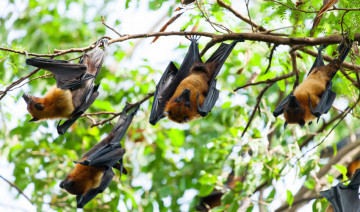
Attracting Bats to Your Yard
Bats are often misunderstood as “flying rats” – undesirable pests that aren’t welcome in the yard. Yet bats can be very beneficial and helpful to the lawn and garden, and make time spent in the yard more comfortable and enjoyable. Attracting bats to your yard is a great way to be hospitable to these amazing fliers and enjoy all the benefits they bring.
Bats and Their Benefits
Bats are flying mammals, and there are more than 1,400 bat species around the world, with approximately 45 bat species found in the United States and Canada. While these creatures have an undeserved dark reputation associated with horror movies, vampires, and chiroptophobia – fear of bats – they actually provide a great many benefits wherever they are found.
Many bats are voracious insect-eaters, feeding on beetles, moths, mosquitos, and other flying insects. Because bats have hearty appetites and one bat might eat as many as 5,000 insects in a single night, they provide excellent pest control for logging, forestry, agriculture, gardening, and landscaping, which saves money because of less need for chemical pesticides. Furthermore, strong bat populations can reduce disease transmission as they keep biting insects under better control, lowering outbreaks of diseases such as West Nile virus, Zika virus, and malaria.
A wide number of bats also feed on nectar and fruit, and as they feed, they assist pollination of critical plants, including food crops. Bananas, agave, cashews, avocados, and cacao (the primary ingredient in chocolate) all depend on bat pollination, and active bats around these crops improve plant health and increase productive yields. More than 80 medicines are derived from plants pollinated by bats, and bats also disperse seeds to spread new plants and regenerate habitats.
Even after eating, bats are helpful. Bat feces, called guano, are rich in nitrogen and make excellent fertilizer. In areas where large bat colonies roost, guano may be harvested periodically as a natural fertilizer, helping agriculture even more.
Finally, simply studying bats can provide great insights that can be adapted for our own uses. Bat flight patterns can help with studies of air currents and flight dynamics, while studying bats’ echolocation has helped develop navigational aids for visually impaired individuals.
Tips to Attract Bats
With so many benefits coming from bats, it’s a great idea to welcome these fliers to the yard. Fortunately, just a few easy tricks can make a yard much more bat-friendly.
- Turn off most outdoor lighting, as bats feel more comfortable in the dark. The exception is to keep one light to attract insects for an easy bat-feeding buffet – a nearby streetlight will do.
- Minimize or eliminate pesticide use to avoid removing essential food bats need. Instead, bats will provide natural pest control with their hearty appetites.
- Leave dead trees or snags intact if they aren’t threatening any structures. These natural cavities are perfect roosting spots for bat colonies to rest during the day.
- Install a bat house as an alternative roost. The house should be mounted 10-20 feet high in an area where it will receive 6-8 hours of sun early in the day to keep bats comfortable.
- Provide water for bats to drink, such as with a small fountain or bird bath. The sound of moving water in a fountain will attract bats with their sensitive hearing.
- Plant a bat garden with fragrant, night-blooming plants and pale blooms such as cleome, dahlia, datura, moonflower, evening primrose, raspberries, and honeysuckle.
- Take time to educate friends, family members, and neighbors about the benefits of bats and how to make this wildlife welcome in more yards than just your own for more suitable habitat.
Even while you begin attracting bats to your yard, it is important to be sure these guests don’t make themselves at home where you don’t want them. Use hardware cloth or dense metal mesh to block openings into your attic, chimney, garage, garden sheds, or other spaces such as soffits or dryer vents where bats might seek shelter but where it isn’t as safe for them to roost. This will prevent any inadvertent conflicts in a bat-friendly yard, and will ensure the bats can visit without becoming unwanted pests.
Bats can be much more beneficial than many people realize, and attracting bats is simple once you understand these mammals’ needs and how to meet them.

